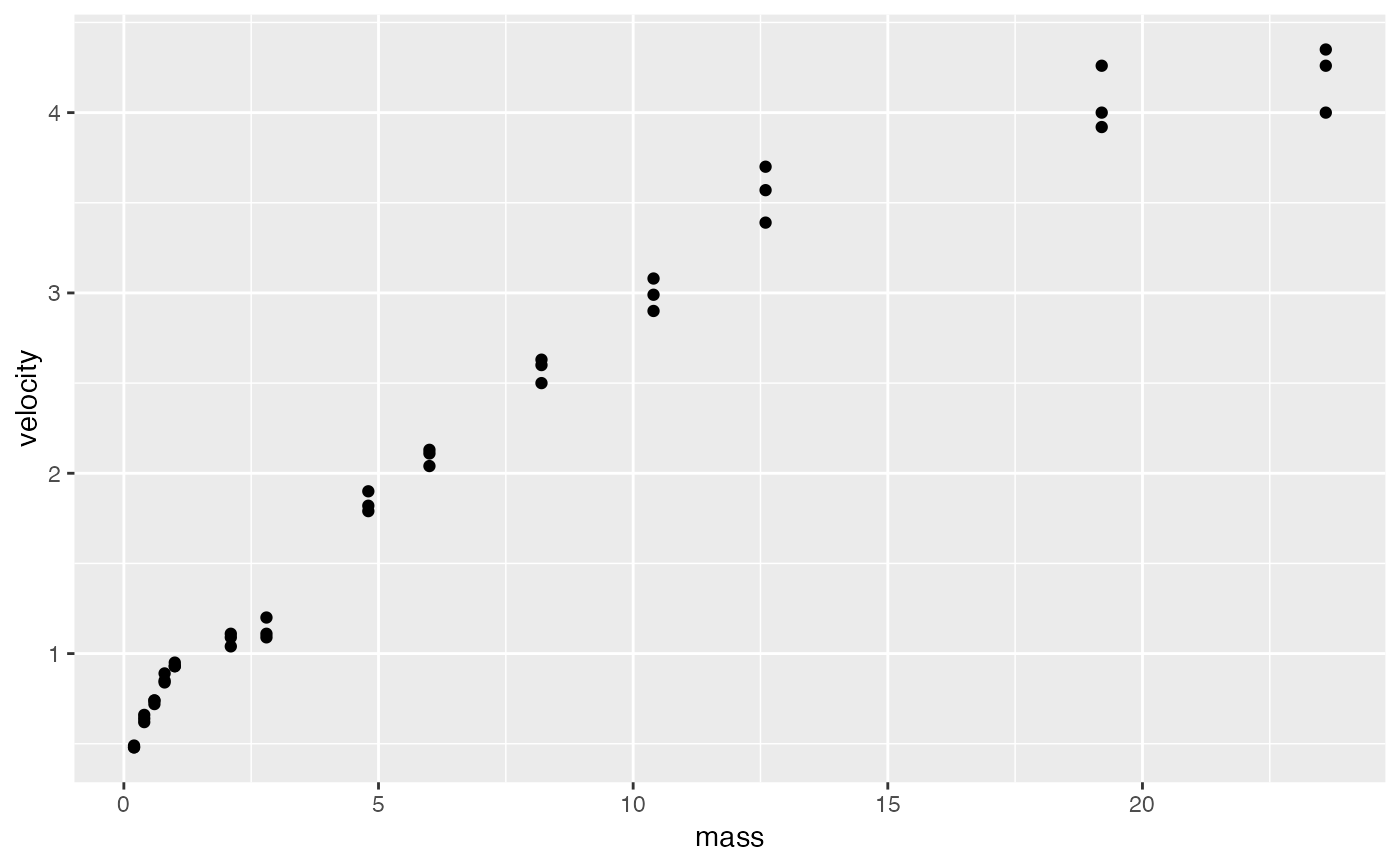The data come from an experiment to determine how terminal velocity depends on the mass of the falling object. A helium balloon was rigged with a small basket and just the ballast to make it neutrally buoyant. Mass was then added and the terminal velocity is calculated by measuring the time it took to fall between two sensors once terminal velocity has been reached. Larger masses were drop from higher heights and used sensors more widely spaced.
Format
A data frame with 42 observations on the following 5 variables.
- time
time (in seconds) to travel between two sensors
- mass
net mass (in kg) of falling object
- height
distance (in meters) between two sensors
- velocity
average velocity (in m/s) computed from
timeandheight- force.drag
calculated drag force (in N,
force.drag = mass * 9.8) using the fact that at terminal velocity, the drag force is equal to the force of gravity
Examples
data(Drag)
#> Warning: data set ‘Drag’ not found
with(Drag, force.drag / mass)
#> [1] 9.8 9.8 9.8 9.8 9.8 9.8 9.8 9.8 9.8 9.8 9.8 9.8 9.8 9.8 9.8 9.8 9.8 9.8 9.8
#> [20] 9.8 9.8 9.8 9.8 9.8 9.8 9.8 9.8 9.8 9.8 9.8 9.8 9.8 9.8 9.8 9.8 9.8 9.8 9.8
#> [39] 9.8 9.8 9.8 9.8
gf_point(velocity ~ mass, data = Drag)
